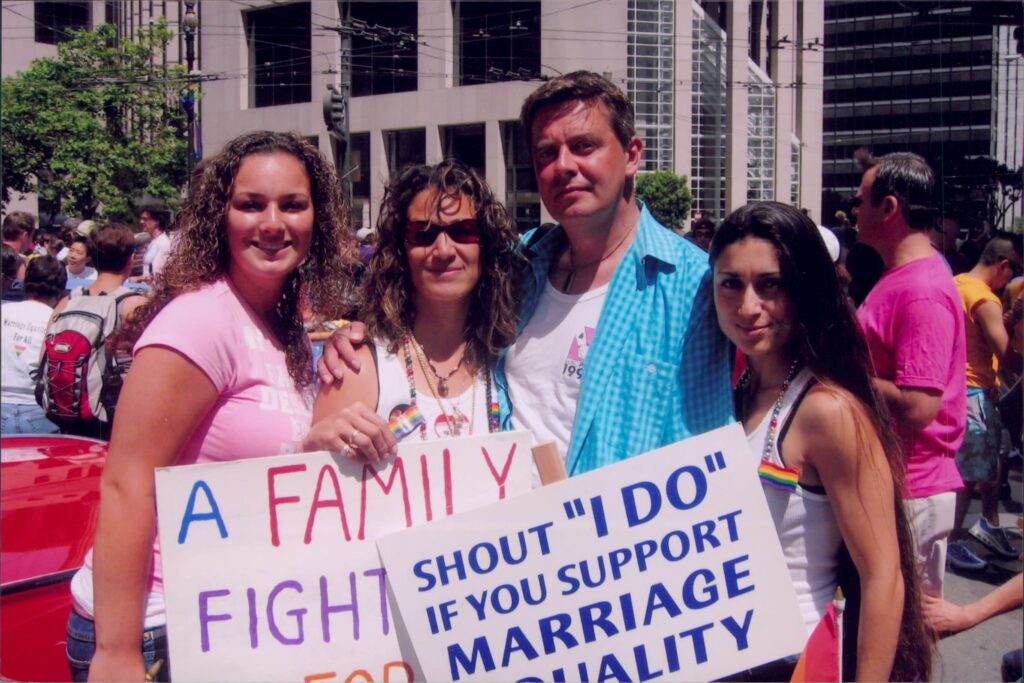Pride Month always hits a little strangely for me every year. As a bi man married to a trans spouse, it can be hard not to feel a little cynical when all the rainbow logos go up. I know that’s probably not the primary emotion one should feel during Pride, but I suppose it’s the PR side of me talking there.
I know very well what PR for the sake of PR looks like, and the “rainbow capitalism” that the internet has come to deride in recent years certainly checks those boxes.
This year brings sobering reflection, too, with news every day of anti-trans legislation and companies dialing back on Pride displays and the like because of backlash. It’s hard not to feel like Pride has been dampened quite a bit. I’m sure that’s what those against LGBTQIA+ people want, and it was because of this that I found myself seeking a historical perspective as the agency decided what we’d do for Pride month.
When we got the opportunity to have Teddy Basham-Witherington, Deputy Director of the Impact Fund, speak to our agency, I jumped at the chance. Teddy’s credentials speak to his experience in leading LBGTQIA+ efforts, with previous roles as the Executive Director of San Francisco LGBT Pride and the San Francisco Gay Men’s Chorus, Festival Producer of the London LGBT Pride Festival, and CMO of Out & Equal Workplace Advocates.
Even beyond the credentials, though, Teddy has lived the experience. He came into our office freshly shaved, showing a scar he had gotten surviving a hate crime, and ready to discuss his personal journey not just as an organizer of Pride events but as someone who has seen the victories earned through a “three steps forward, one step back” march of progress (his words there.)
Pride has never been a smooth course — its true roots are in riots at The Stonewall Inn, in sheer defiance at the police raids of gay bars during the 1960s. And despite gains made during the 1970s, the 1980s brought with it harsh backlash and the AIDS pandemic that the LGBTQIA+ had to rebuild from. I found myself wondering if there would always be this cycle. Gain a bit, society pushes back, gain a bit, and so on.
While there is truth to that, Teddy insisted that he meant three steps forward, not two steps forward, as the adage usually goes. Strictly speaking, the floor has been raised beyond what it was in Pride’s founding days.
One of the most meaningful takeaways from Teddy’s talk was his analogy of a darkened stage with a single spotlight. “The first people to come out of the shadows were gay men, mainly white gay men. It’s the gay community that’s visible. It wasn’t long after that when women came out of the shadows, and you have the lesbian and gay community. There was controversy over adding the L word at the time.”
This struck me as a surprise. Growing up in the 1990s, it always seemed like there was never any doubt that it was the lesbian and gay community but hearing that even these gains and the widening of the community had to be pushed and fought for. Teddy went on to explain that as bisexual and transgender people came forward in the mid-1990s, there was a massive conflict over adding B and T to the familiar acronym.
“Serving as the festival producer of the London Pride festival at the time, I was never off duty in the queer community,” Teddy explained. As a nightclub owner came up to talk to him about the addition of bisexual and transgender people to the community, Teddy reminded him that it would be welcoming to a wider group of people.
Even what I thought would be considered a simple observation opened Teddy up to controversy, with the leader of a gay conservative group accusing him of holding up Pride to ridicule. Teddy claims he was not at his best when he shot back that as the leader of a group supporting then Prime Minister John Major, the conservative knew what he was talking about when it came to ridicule.
While I personally thought Teddy was quite at the peak with that response, I understand where he’s coming from — even in the LGBTQIA+ community itself, there is still room to grow and listen to others. And there is always room for others.
Teddy reinforced that point when describing a dinner with LGBT pioneer Harry Hay and his partner at the time, John Burnside, who noted while grating cheese that he had to approach the task by applying a diversity of angles. “It was a beautiful metaphor for both the value of including the other and the difference being a group strength.”
Teddy later referred to the melting pot analogy of bringing different communities together but stated he liked the salad bowl analogy better: each element comes together to make something unique but gets to keep their individual identity.
Teddy’s own reflection on what led to his acceptance of his own sexuality as a gay man is probably what I’ll take away the most from the conversation, though. He attributes his studying to saving his life: “There’s a part in the book, Passage to India, where a character goes to a cave. The characteristic of this cave is that no matter what sound you make, the echo is the same. You could cry a stream of obscenity or the most holy words, and the echo is exactly the same. Everything exists; nothing has a value other than what we place on them. When I read that at age 17, I was okay with who I was.”
As for the future, Teddy, for his part, speaks optimistically, noting that even when it came to disputes on who should stand where in a Pride parade one year, he observed that the community came together and figured it out on their own (except for some uppity politicians who had to be guided around.)
He notes the community tends to come together when attacked and states that newer generations of people are committed to coming together to keep fighting, marching, lobbying and celebrating. “In the queer community, we have this little saying that ‘the sky is darkest before the rainbow.’”
Is Pride a place to find community? A place to make a political statement? Teddy says he’s gotten both answers over the years in his role as an event organizer. Perhaps the two concepts can’t be divorced, nor should they be.
“It’s incumbent on me to include everyone in a circle of love,” Teddy remarks.
What sticks with me as I hear Teddy talking is just how much grace the man has. Even to his attacker, who left him with 28 stitches inside and outside his face, a gay man who had not reconciled with that fact, Teddy only says he understands the rage and shame he learned from society and wishes that the person found healing since then.
So, Pride can be a community, Pride can be a statement, and Pride can be anger at the mistreatment of people. That’s where my cynicism at the start of the month was coming from.
However, as I reflect on what Teddy has said, the stories and emotions he shared, I realized two things: one, for the value we place on telling stories, it’s all too important to sometimes listen to the stories of others too. And second, my biggest lesson for myself: Pride can be grace, too. I hope not to forget that any time soon.

